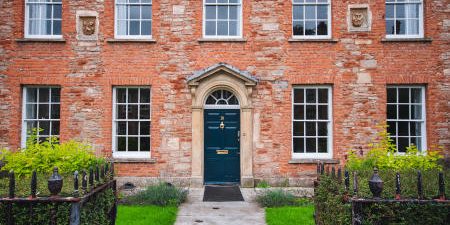You may have heard the term in passing, visited one in person or you may even know someone that owns one, but what exactly does it mean when a building is ‘listed’? In this article we go back to basics and recap what a listed building is, and why (and how) a building qualifies for a place on ‘the list’. We have also included examples of listed buildings that can be found within your local area.
What does ‘Listed’ building mean?
When a building is ‘listed’ it means it is deemed worthy enough to be included on the statutory list of buildings that boast special architectural or historical interest. Listed buildings come in many shapes, styles, and sizes, from terraced houses to grand stately homes.
The respected status associated with Listed properties not only adds further charm and appeal to a building, it also brings some added protection to a property. This includes extra legal protection within the planning system, as well as strict building controls. These building controls can often make planned alterations, extensions, or demolition projects tricky to manage, but are necessary to ensure the buildings remarkable, historic elements are shielded.
How are listed buildings chosen?
Age and preservation are the main ingredients considered here. All buildings built before 1700 which survive in anything like their original condition are listed, as are most of those built between 1700 and 1840. The more modern a building is, the more unique it will need to be to be considered for listed building status.
Buildings that date from 1945 onwards need to be particularly carefully selected and usually a building must be over 30 years old to be eligible for listing. You can apply to Historic England for a historic building or site to be protected through the listing system.
How are listed buildings protected?
Listed buildings generally require consent for any works carried out on them. This consent can vary greatly from property to property. In one property, listed building consent may be required for painting a door, whilst in another consent may not be required. The controls are put in place to ensure the correct care and protection is given to the building to help maintain as much of the original historical elements, beauty, character, and appeal of the property as possible.
Typically, the more substantial the works proposed to a listed property, the more likely they are to require consent. The only way to be certain is to ask your local council for its opinion and consent if required.
What is the difference between grade 1 and grade 2 listed buildings?
There are three categories of listed building, based on their significance:
- Grade I buildings are of exceptional interest and only 2.5% of listed buildings are Grade I.
- Grade II* buildings are particularly important buildings of more than special interest and just 5.5% of listed buildings are Grade II*.
- Grade II buildings are of special interest and the vast majority, 92%, of all listed buildings fall into this category.
- In England there are approximately 376,000 listed building entries amounting to over 500,000 listed buildings. It is hard to be precise as one list entry for example, can cover a row of terraced houses.
Where can I find out if a building is listed or not?
The National Heritage List for England (NHLE) is the only official, up to date, register of all nationally protected historic buildings and sites in England – listed buildings, scheduled monuments, protected wrecks, registered parks and gardens, and battlefields. However, your City Council should keep records of all listed buildings within your local area.
Listed Buildings in Kent
Have a look through the listed buildings in and around Kent, you may even find some you would like to visit.
If you own a listed building, you may be interested in our new glass technology called Fineo. Fineo’s ultra-thin (6.7mm) profile means it can be easily retrofitted into all timber windows and doors – so the original historical frames are maintained. You will gain all the benefits of double-glazing without needing go through the length planning application process. If you would like to find out more about why Fineo glass is the perfect solution for listed buildings please don’t hesitate to call us on 020 3576 7500 for a chat.

